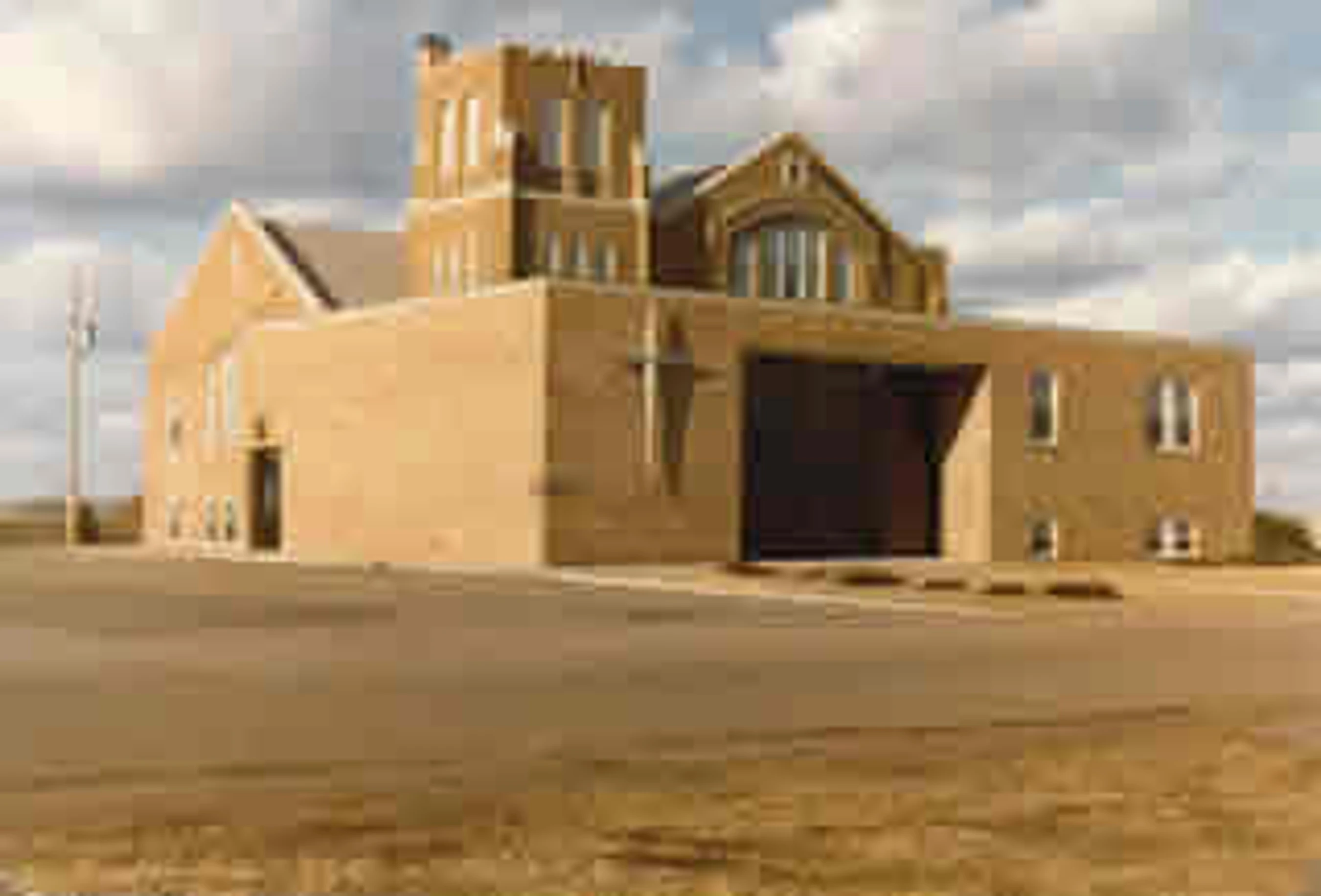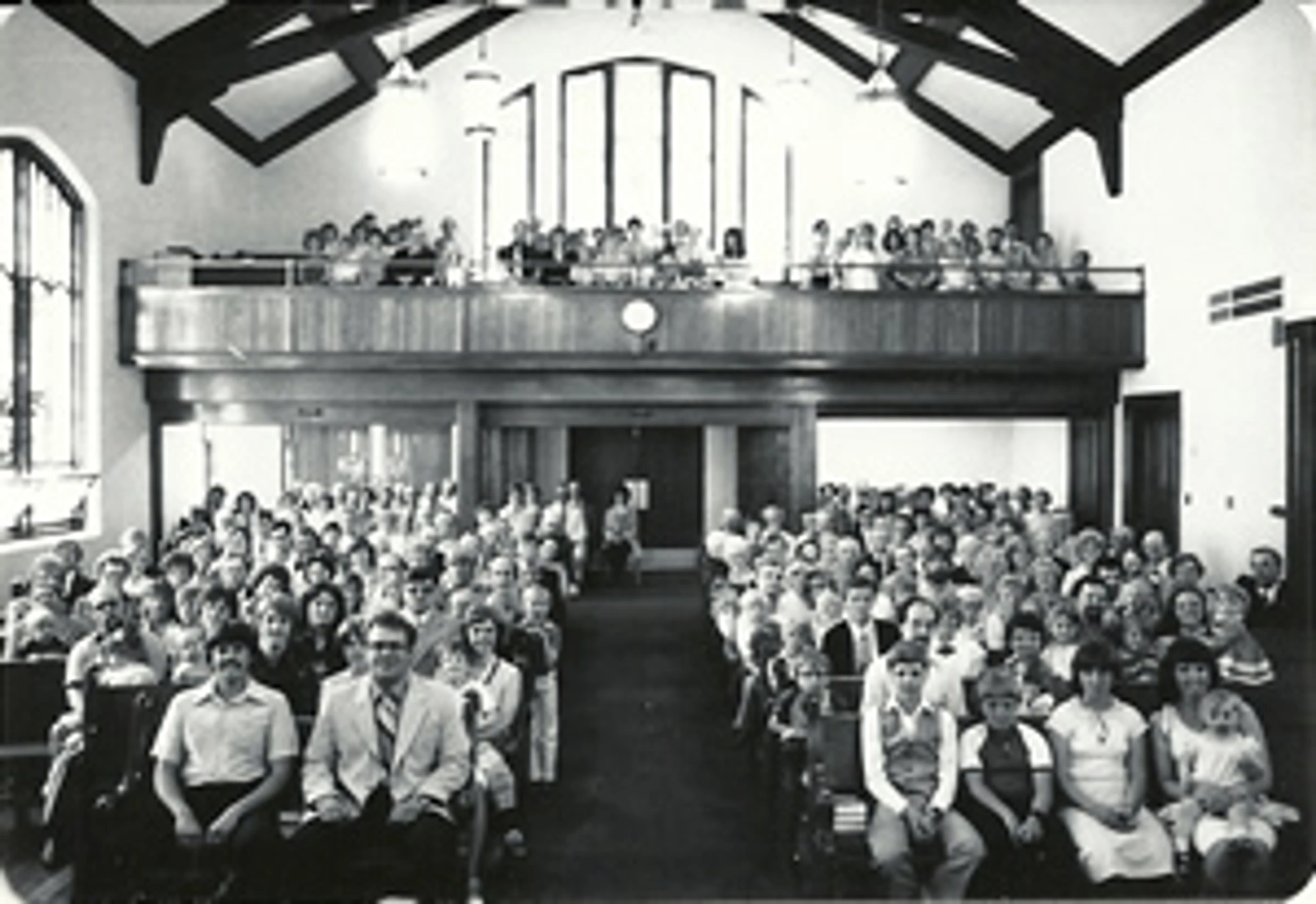Rev. Milton G. Nelson (1946-1950) was the second pastor to produce a Sunday morning radio program. This program was all English and one half hour long. Nelson named this airtime “The Church by the Side of the Road.” This program used church members for musical numbers. Nelson and his wife often sang duets. The program aired over a Sioux Falls station. He and his wife were the first to live in the parsonage in Beresford. Nelson died in 1950. The Rodman brothers, George and Fred, served as interim pastors until June 1951.
For many years (late 1930’s-1970’s) carnations were presented to each Mother present at the Sunday morning service. Mothers were asked to stand and the young girls had white or pink carnations to give them. The white carnations were given to those who had a deceased mother. The pink carnation (or sometimes red) were presented to those who had living mothers. The Daughter’s Auxiliary, an adjunct of the WMS, sponsored a Mother-Daughter tea. A program from 1948 had Marilyn Norman as chairman. The theme was “Flowers in the Garden Christians”. Program numbers were: Tribute by Elvina Carlson, Toasts by Phyllis Sundstrom and Ruth Fahlberg, short talks by Ida Anderson, Jean Seashore, Lorraine Norman, and Esther Nelson, solos by Leila Soderstrom and Dorthy Heglin, a duet by Betty Fahlberg and Maye Holms, and Gwenneth Erickson played the offertory. After the Daughter Auxiliary disbanded the WMS held a Mother-Daughter Luncheon until the WMS quit their regular monthly meetings.
Some of the church organizations were active for many years but changed due to changes in life style, ease of travel to other events and mothers working outside the home. Attendance became less. Daily Vacation Bible School lasted two weeks and was introduced by Rev. Glen Nelson (1930-35). Bible School continued on until 1973 when Pastor Arlyn and Janice Abrams started Day Camp at Bulow Park Ruth Seashore organized the Mission Band (1935) for children. The children met before Sunday night services. It was time to learn Bible Verses and sign choruses. In 1966, Mrs. Detlov Lindquist started Children’s Church since Mission Band had quit. It was on Sunday night with a similar format. Children’s church quit in 1972.The Ladies Aide (WMS) began in 1880’s and continued for approximately a hundred years. Men’s Fellowship was established in 1952. Vincent Swanson was the first chairman. The men had monthly meetings, donated to missions and held services at Gospel Mission. The Heritage Choir was organized for senior citizens in 1976. The choir sang for Sunday evening services and at retirement homes. They were led by Alice Mae Kennedy, Doreen Fahlberg, and Donald Thissell. Another change was the instruction of 12-13 year olds. Up until the early 50’s, Martin Luther’s Blue Confirmation Book was used and many scriptures memorized. It was replaced by an instruction book printed by the Free Church.
Memberships were accepted after the church had been incorporated in May 1882. There were 48 charter members. Since membership has not been pressed there are more people attending than are members. Membership is granted upon a testimony of faith in Jesus Christ. The church practices adult believers baptism. Brooklyn now has a baptistery in the Youth Building For many years Brooklyn had their baptism services at Dalesburg Baptist and Westside Evangelical Free Church.
Here are some comparisons between then and now for some holidays and occasions.
Christmas Nights, 8 p.m., was always the time for the Christmas program. Now the program is the Sunday night before Christmas. New Year’s Eve was celebrated 9-12 p.m. The night began with a program—next was pie and coffee time and the guys assembled to pray in the New Year.
The Young People’s Bible Camps were at Swan Lake, Lake Poinsett and Camp Judson in the Black Hills Now they go to various places like Boundary Waters, Louisiana, Pine Ridge, and Hidden Acres Camp in Iowa
Fourth of July was the date for the Sunday School picnic. Centerville Beach was the place. The picnic area provided a screened clubhouse, playground equipment, concessions stand, and a slide for those who liked to swim. These favorites are gone. Now the picnic is usually at Bulow Park, Beresford and on the last Sunday in August. Lunch after a funeral was not common at church until the 1940’s. Now lunch is an expected part of the funeral services.




